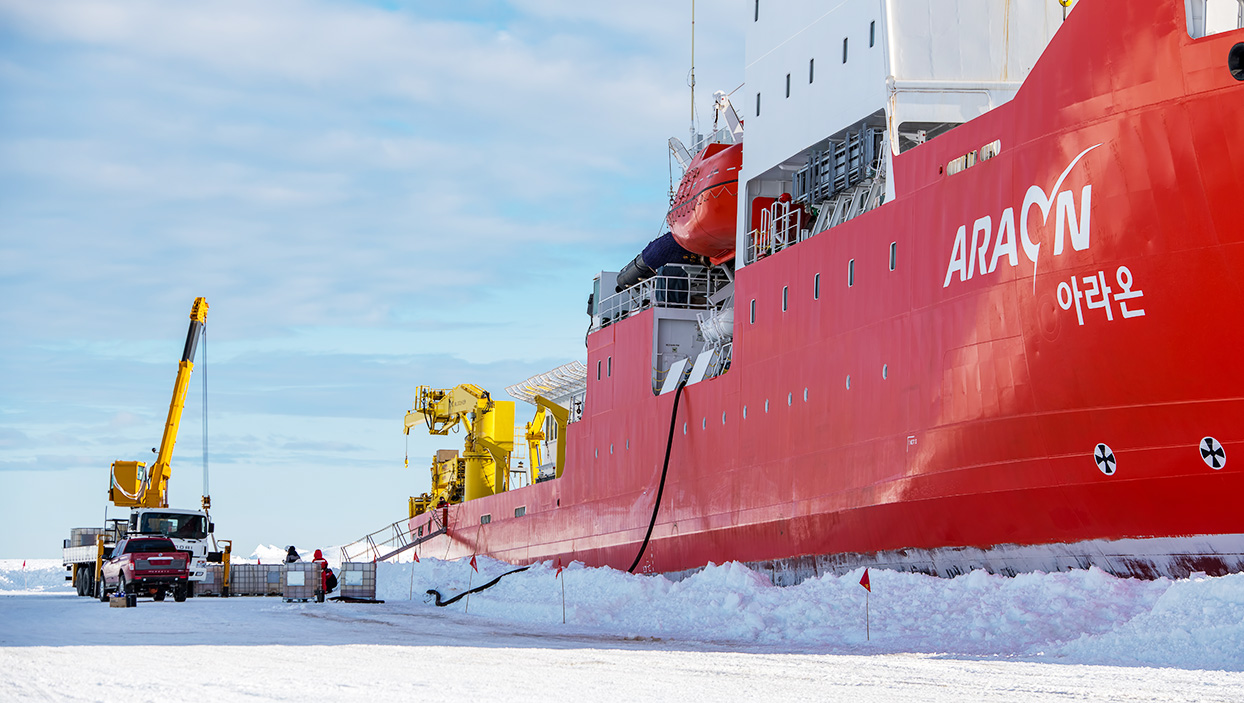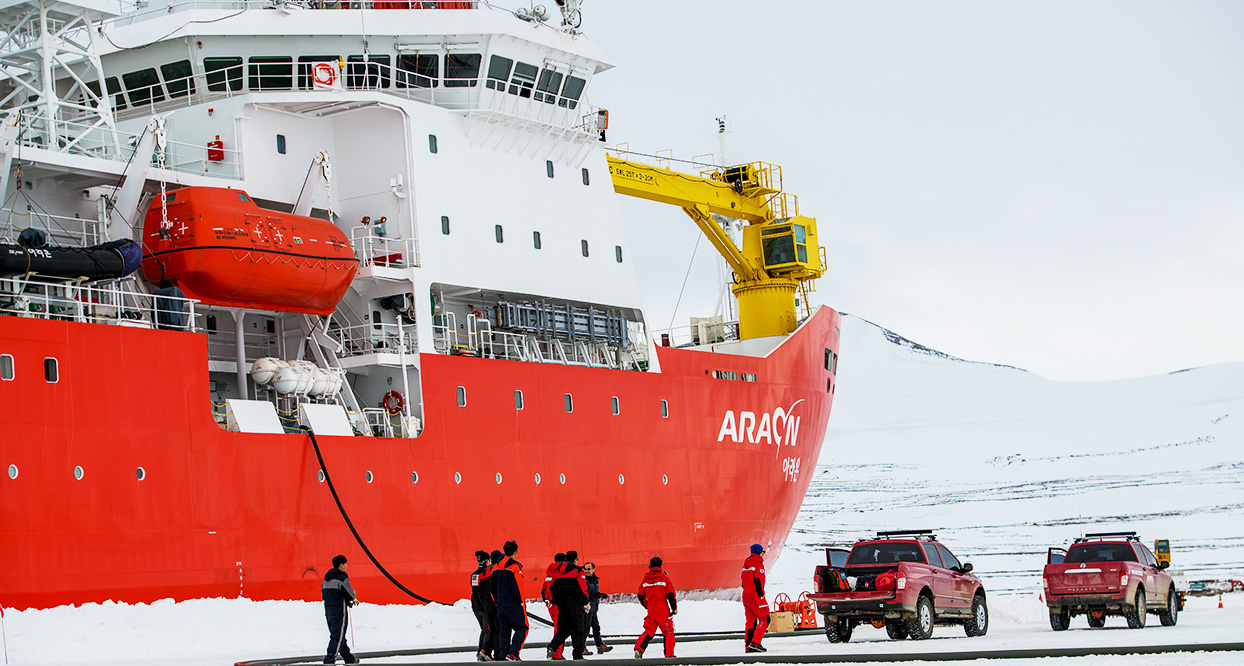Introduction of the Ice-breaking Research Vessel
Start at the end of the world
Araon ship
Exploring and investigating the Arctic and the Antarctic
Construction Period2004 to 2010
Total expenses108 billion won
-
Environmental conditions
Maximum temperature: 50 ℃,
Lowest temperature: -30 ℃Maximum water temperature: 35 ℃,
Lowest water temperature: -2 ℃ -
Main mission
Conduct independent polar research in the harsh Arctic region
Support stations in the South and North Pole and construct the Antarctic Jang Bogo Station
-
Major research fields
Polar environment change monitoring /
Atmospheric environment
and ozone layer research /
Paleo-marine and paleo-climate research/
Research and development
of marine biotic resources /
Study of the geological environment
and resource characteristics
What is an icebreaker?
An icebreaker is a ship specially designed to navigate through ice covered waters, and also provide safe waterway for other vessels. Thus, an icebreaker can sail to places where normal ships cannot, including the poles. Some ice-breakers may not have icebreaking capabilities, but they are ice-strengthened vessels with a reinforced outer hull, making it possible to navigate through Polar Regions that are full of scattered icebergs and drift ice.
Overview of the Icebreaker
An Icebreaker has three traits that most regular ships lack, a strengthened hull, an ice-clearing shape and power to propell through the sea ice. This allows the vessel to navigate freely through ice-covered waters, clearing paths for other boats. The icebreaker is structurally stronger than normal ships with a thicker outer wall made of thick steel plating and a sloping bow to break and direct the broken ice around or under the vessel. Recently, for environmental safety and protection it is mandatory to design the vessel with a double hull. The icebreaker rises above the ice sheet and breaks the ice using the weight of the ship, so it needs to change its center of gravity effortlessly. If the hull completely rises above the ice, there is a risk of being stuck in the ice. Therefore, an ice knife prevents the vessel from fully rising above the ice. Also, to prevent broken pieces of ice from crashing into the vessel, water or air is sprayed on to the hull. It is essential for an icebreaker to propel itself through the ice by breaking it and clearing away the debris from its paths.
The design and scale of the ship is determined by the purpose, function, number of crew, equipment, navigation area, safety regulations and icebreaking ability. The final scale and design is determined after various simulation tests that include a pilot test, resisitance propulsion, and ice breaking capability. Based on these tests, construction begins after the designing is complete. Although the icebreaker construction goes through rigorous testing, it is still necessary to acquire information regarding ice conditions and drift ice when navigating in the polar regions. To avoide thick ice zones and to navigate through areas of broken or relatively thin ice, the ship gathers information via satellite or helicopter scouting.
Araon at a glance
Cruise Distance
20,000 ㎡
Can circumnavigate the earth once without resupplying
Number of Passengers
85 people
25 crew members / 60 researchers
Icebreaking Ability
KR PL-10 DAT-30℃
Can break flat ice of 1m thickness at the speed of 2 knots per hour
Loading Capacity
27TEU + 4TEU
5ETU can be loaded in cargo holds. Preparation of survey equipment and parts



